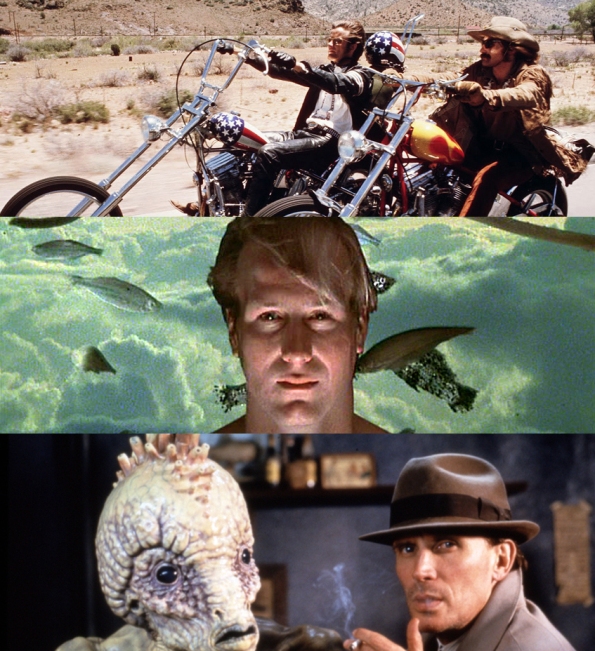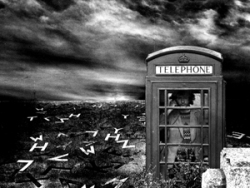Archive
Being John Malkovich Blu-ray
Out now, new 4K restoration of the 1999 movie from Arrow Academy, featuring a reversible sleeve (see above) and many new extras, including a featurette exploring the marionettes made for the film, the full Floor 7½ corporate video seen in the film, and the full pseudo-documentary “John Horatio Malkovich: Dance of Despair and Disillusionment”.
The first pressing includes a booklet containing archive publicity materials and an in-depth essay by myself, where I explore the phenomenon that is John Malkovich, the phenomenon that is Charlie Kaufman (screenwriter) and how they fused so marvelously in this piece.
Find out more here: Arrow Films
Psychedelia in the Movies, Part 1 – Reality Sandwich
My article Psychedelia in the Movies, Part 1, originally published in the Psypress UK Journal 2015 Vol IV, has been republished on Reality Sandwich, including the illustrative video clips. So the full experience of text and imagery is now available online!
From its earliest days the medium of cinema has embraced the flight of fancy, the surreal journeyings of the imagination, reified on celluloid by ingenious combinations of special effects. Georges Méliès remains the most celebrated pioneer of this kind of work, producing masterpieces such as A Trip to the Moon (1902), The Kingdom of the Fairies (1903) and The Impossible Voyage (1904), which employed multiple exposures, hand colouring and substitute splicing amongst many other techniques in order to make the filmmaker’s vision come alive.
But when it came to placing specifically drug-induced visions on the silver screen, the inevitable barrier of censorship prevailed for many decades, as of course it did with explicitly sexual and violent content. The Motion Picture Production Code (the Hay’s Code) was very rigorous on the matter of drug use depiction, though it began to ease as the censorship climate softened through the 1950s. This edict was in place until March 1951: ‘The illegal drug traffic must not be portrayed in such a way as to stimulate curiosity concerning the use of, or traffic in, such drugs; nor shall scenes be approved which show the use of illegal drugs, or their effects, in detail.’
Specifically anti-drug movies – such as the risible Reefer Madness (1936) – were permissible, but the first major film to study drug use seriously was The Man with the Golden Arm (1955), directed by Otto Preminger and starring Frank Sinatra as a heroin addict who struggles to say clean after a spell in prison. Very controversial in its day, it was one of the first films to challenge the Hay’s Code restrictions and it laid the ground for the massive changes that were to follow shortly in the 1960s. Consequently when the acid revolution took place, the acid movie was not far behind.
Read more on Reality Sandwich.
Cinema Review: Inception (via The Digital Fix)
Still: the third level of Dom Cobb’s dreamworld © Warner Bros.
My favourite films involve dreams and dreamlike continuums, such as Dead of Night and Mulholland Dr., so when I heard that Christopher Nolan was making a dream-oriented blockbuster, spawning a new genre—the metaphysical sci-fi actioneer—I was intrigued. The results are good to mixed, and whilst the film works well in its own terms, it doesn’t quite achieve the magic of the aforementioned masterpieces.
Depicting dream in film, effectively capturing the nuances of its radically altered physics and metaphysics, is very much a minor art in its own right. Hitchcock was pretty good at it; then there’s the European school that would include Buñuel, Resnais, Cocteau and Tarkovsky; and David Lynch is currently acknowledged as the master of the extended dreamlike state. Together they make a fine peer group for Christopher Nolan to associate himself with as he draws dream into the mainstream with his thriller Inception; and with a track record in reality benders such as the tricksy reverse-narrative Memento and the smoke-and-mirrors prestidigitation saga The Prestige, he would seem well qualified for the job.
But for all its Freudian rollercoaster ride tropes and the occasional Kantian grappling with the nature of reality, Inception proceeds along very familiar lines. It opens with a routine rough-and-tumble mission, which provides a taster for the big one that will form the body of the movie. Dom Cobb (Leonardo DiCaprio) is an espionage agent specialising in stealing secrets from targets’ minds by means of manipulating shared dreams in scenarios that take the form of 4-D chess games of the id. And he doesn’t work alone. So, in addition to his regular sidekick, Arthur (Joseph Gordon-Levitt), he assembles a crack team, including dream architect Ariadne (Ellen Page), impersonator Eames (Tom Hardy) and sedation expert Yusuf (Dileep Rao), in order to go after their ‘mark’, business magnate Robert Fischer (Cillian Murphy) on behalf of rival Saito (Ken Watanabe).
Read more on The Digital Fix
3-D—A Vicariously Trippy Experience
 The news that Alice in Wonderland has become the tenth highest grossing movie of all time, supplanting Peter Jackson’s The Two Towers, further strengthens the hold the 3-D phenomenon has taken over cinema. The fact that an offbeat fantasy, which did not receive the highest critical praise, could be so successful is another indication that audiences are flocking to cinemas for the spectacle, the buzz of 3-D alone, with subject matter a secondary concern. So what exactly is the nature of the new 3-D’s seductive allure, its x-factor, its secret ingredient? As psychedelic initiates have realised, 3-D produces something like an altered state, a non-ordinary level of sensory experience that is comparable to a drug trip.
The news that Alice in Wonderland has become the tenth highest grossing movie of all time, supplanting Peter Jackson’s The Two Towers, further strengthens the hold the 3-D phenomenon has taken over cinema. The fact that an offbeat fantasy, which did not receive the highest critical praise, could be so successful is another indication that audiences are flocking to cinemas for the spectacle, the buzz of 3-D alone, with subject matter a secondary concern. So what exactly is the nature of the new 3-D’s seductive allure, its x-factor, its secret ingredient? As psychedelic initiates have realised, 3-D produces something like an altered state, a non-ordinary level of sensory experience that is comparable to a drug trip.
The very act of putting on the glasses and seeing things differently is like passing through a gateway, or cleansing doors of perception. Then there’s the strangeness, the strikingly unusual quality of 3-D vision, where everything is heightened, surfaces and textures are more alive and resonant, and the commonplace becomes transfigured and imbued with specialness. The nature of how things are rendered in 3-D becomes part of the viewing pleasure, as important a factor as plot, action and characterisation; and the anticipation of the next 3-D thrill, plus the sense of immersement in another realm, take the audience beyond mere cinema into theme-park-ride and virtual-reality territory—other parallels for chemically enhanced consciousness.
Moreover, Alice in Wonderland proves the case that 3-D movies are becoming trippier in terms of narrative and design as well as in sensory effect. The story of Alice has been a favourite paradigm for trippiness ever since Grace Slick’s ‘White Rabbit’ marshalled up the references: substances to make you grow or shrink, a hookah-smoking Caterpillar and the talking Rabbit himself—a film favourite from Harvey to Donnie Darko to Inland Empire. Using a medley of techniques—green screen, motion capture, live action and full animation—Tim Burton has pieced together a new Wonderland for the 2010s, and with a combination of his already well-developed Gothic-weird sensibilities and the astute use of 3-D, he has rendered the material into a totally bone fide trippy adventure. In 3-D the z-axis layering of the various elements—themselves set at different points in the scale of reality to unreality—creates a synergy that gives rise to an entirely new whole: an alloy of the real and imaginary that lives independently on its own terms…how psychedelic is that? Read more…





